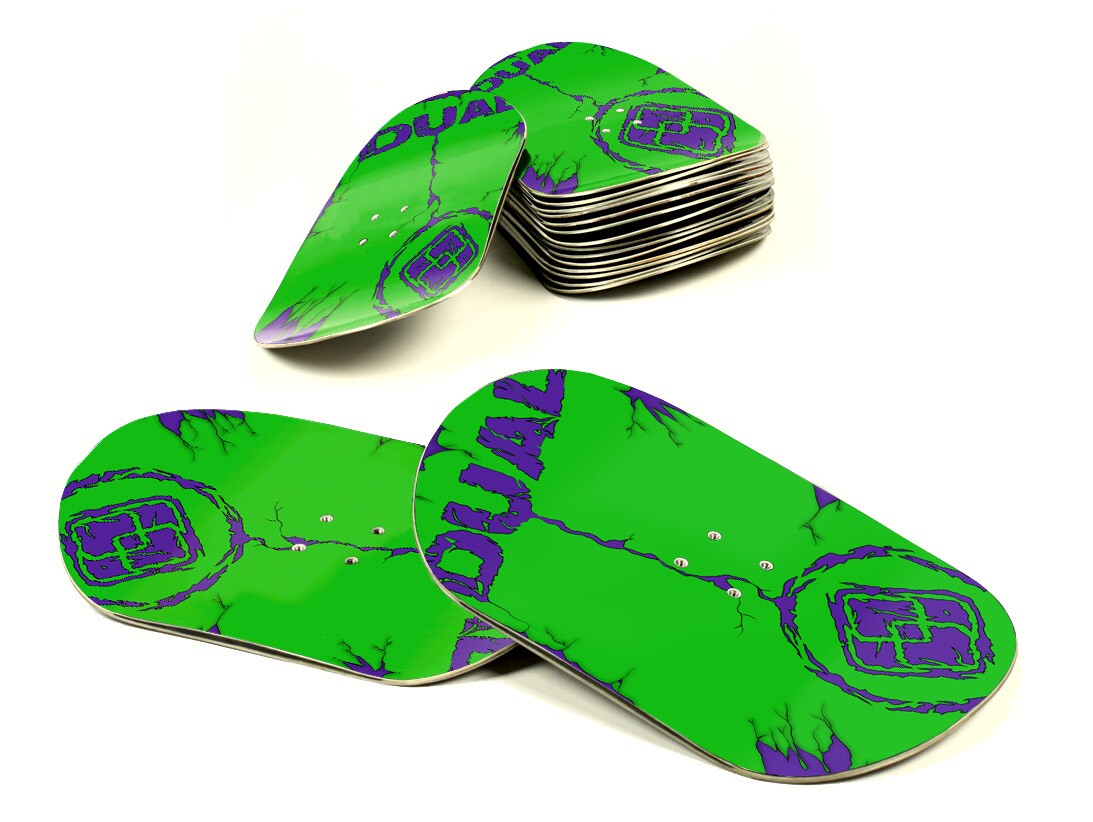Dual Snowboards delivers a unique twist to the world of snowboarding by cutting the traditional snowboard in half along the waist, giving you a board for each foot. With this simple move that effectively sees a lunch-tray-like board strapped to each foot, the company says riders get more freedom to move and conceptualize new tricks like ninja-like flip-n-kicks, but they'll also be able to pull off Gore-Tex-ripping splits, nut-demolishing pole wraps and devastating banana-peel falls. Proceed with care.


Ever since its conception and popularization, the snowboard has been one of the premier tools for speed, adrenaline and big air. What the snowboard has never been is all that maneuverable on the ground. Yes, once you get the hang of it, it is easy to turn, carve and stop, but a large board is difficult to move forward on flat terrain and can feel like a big, immobile plank to newer riders. Skiers have a little more freedom in having both legs pointed naturally forward and free to move individually, but snowboarders are locked into a less natural stance.
Dual Snowboards sets out to even the playing field and give riders the "freedom to move around the snow in ways not thought possible."
CEO Scott Rickett told Gizmag, "Dual Snowboards were invented as a way to bring the best of both skiing and snowboard[ing] together. You have the fun and ability to ride like a snowboard with comfortable boots and bindings, but now your feet are not locked together so you have the freedom and mobility of skis without the bulky size and cumbersome poles."
The boards feature a what's what of traditional snowboard components - sintered base, poplar wood core, ABS sidewalls, stainless steel edges and standard binding inserts. You can use your traditional snowboard bindings and mount them with your preferred stance.
Both of your legs will be free to move independently so you'll be able to walk over the flats - assuming you can get some grip on the slick snow. According to Rickett, some riders have even used them in place of snowshoes when hiking through back-country powder.
All the photos and videos show a clear freestyle focus. Rickett says that carving is possible with a little practice and muscle control, but two short edges seem far less ideal for carving and speed than a long single edge. Although, the average Dual rider probably won't venture far from the park or pipe.
Dual Snowboards could very well suffer the same fate as the monoski, snowlerblades and other obscure snow sport equipment that attempted to combine the advantages of several pieces of gear only to spend more time combining their pitfalls. Maybe they'll gain a tiny, passionate cult following, but I don't see many people selling off their quiver of snowboards and putting all chips on Dualie.
That seems to be okay with the company. Even company execs have no plans of abandoning more traditional gear and see Dual Snowboards as more of a complement than a replacement.
Rickett said, "I will never stop snowboarding. Dual Snowboards makes you a better skier and snowboarder - when I put my traditional snowboard on after 2 hours of riding the Dual boards I feel like superman; I ride stronger and harder."
Dual snowboards cost US$265 per pair, a price that's cheaper than the majority of snowboards on the market this year. You can order through Dual's website.
Comments
Post a Comment